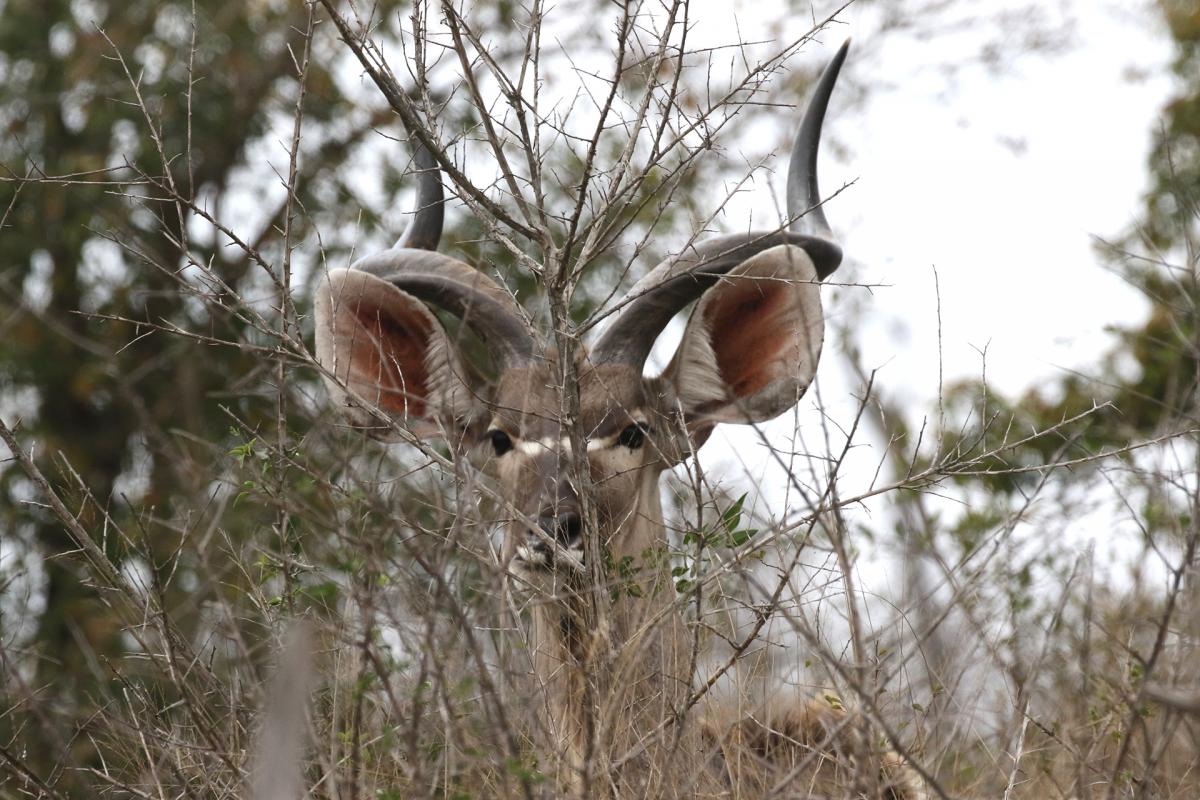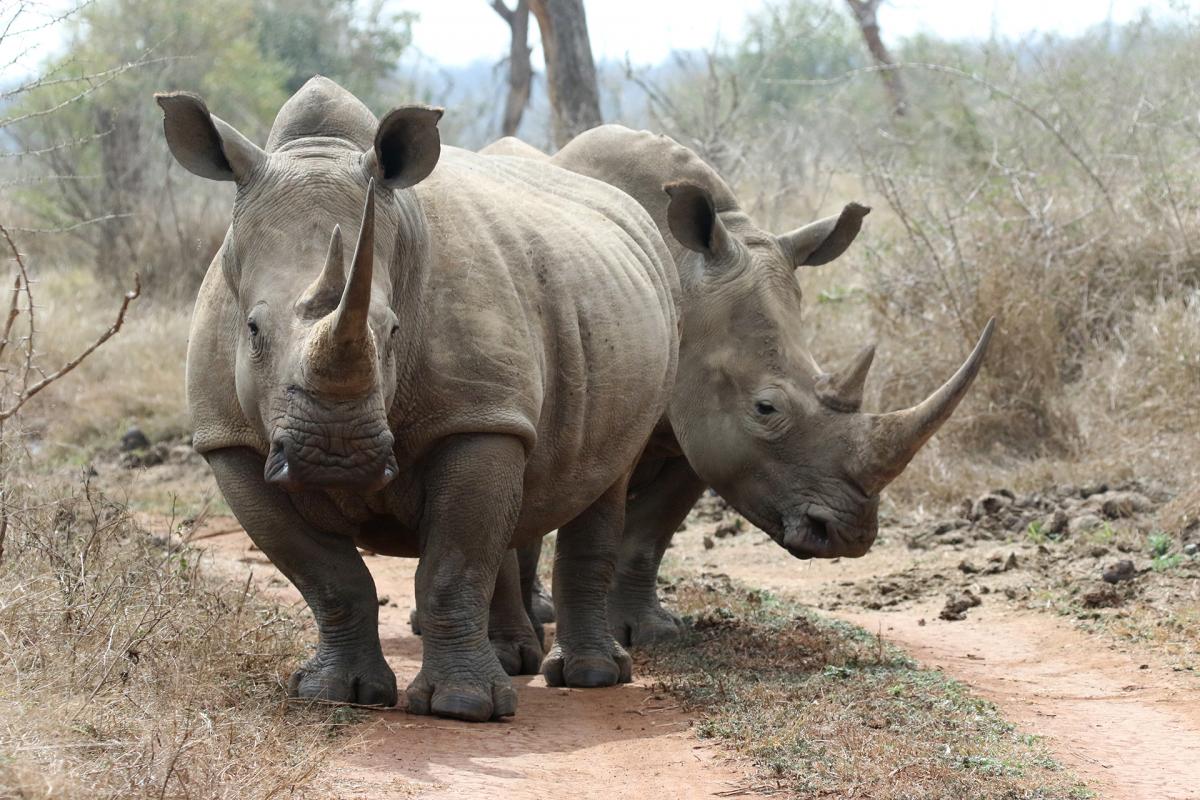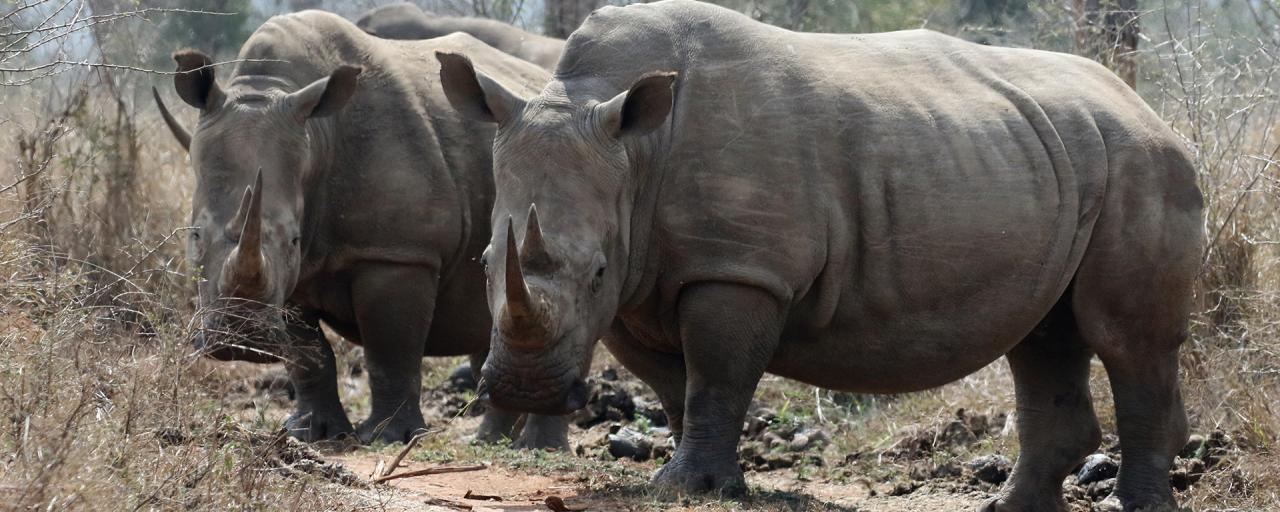Submitted by SafariADV on Fri, 2018-11-09
This morning we left quite early and we arrived at the Hlane Royal National Park, in Swaziland or Eswatini, around 10:30am; it's too early to check-in in our cottage but it does not matter, we're interested in discovering the park.
We'll get a from to the reception desk of the Ndlovu Camp, the main park camp, from where all the activities start; the map is perhaps a bit too rough, but in any case we have Tracks4Africa and we start to explore the park.
The park is a total of 22,000 hectares, but it is divided into three sections: the rhinos section, where there is a deliberately unspecified number of white rhinos, along with elephants, impalas, nyalas, giraffes, wildebeests, kudus, warthogs, baboons and other non-predatory animals; the lion section where there are lions, there are no rhinos, but there are all the other animals, and finally the main part of the park where rhinos, elephants and lions are missing, but there are all the other herbivores.
We leave the gate of the Ndlovu Camp and venture along the dirt road on our left; we are in the rhinos sector and we hope to see them.
The vegetation is thick and there are several dead trees, we think of a flood, but then they will tell us that they were the elephants; these trees are in fact the knob thorn trees, their wood is very resistant so, when they die, their trunks remain standing for some time, while the reason why they die is that elephants eat the bark and this causes the plant to die.
We see a kudu that looks at us through the bushes, it seems halfway between intrigued and scared, after a while the scared takes over and it runs away hiding in the bush.

Shortly after we see a white rhino, it is a bit hidden in the bushes and it is not easy to photograph it, it also moves continuously; it must be a female and it is pregnant, you can clearly see that it is very big.
After all the effort to find, several times, the right place where to take the photos, we realize that shortly after, in front of us on the road, there are two beautiful rhinos; soon we understand that there are not two but six, the others in fact come out a little later from the bushes.
One by one they cross the road and go towards the waterhole in front of the Ndlovu Camp, they passed very close to us, thank goodness they are white rhinos and not black ones, the latter are much more aggressive; next to us there is also the camp safari car with guests on board.
We continue our tour but it is really difficult to spot something because the vegetation is very dense; we see nyalas and impalas and a couple of warthogs.
The roads are all unpaved but in good condition, although you have to use a bit of caution to drive here because the antelopes often cross the road but, because of the vegetation, you see them at the last moment.
We do not venture too far because it is easy enough to lose the orientation and the roads are not marked; we use Tracks4Africa and the compass to return to the Ndlovu Camp.
This afternoon we are still uncertain about what to do, while for tomorrow we have booked a guided safari because it is the only way to see the lion section; now instead we go to lunch.



